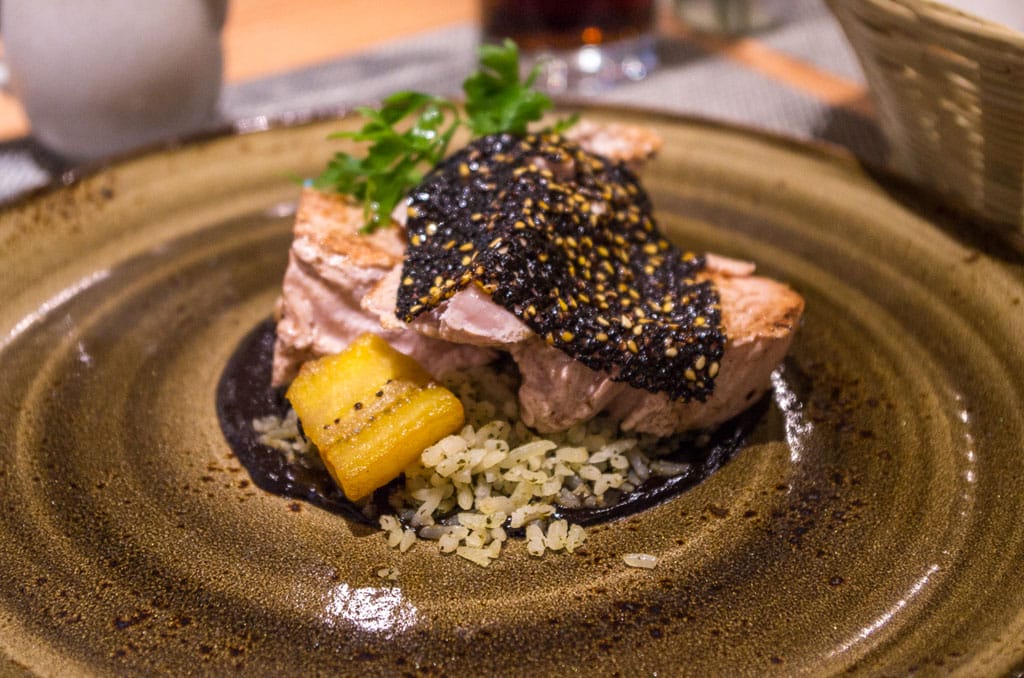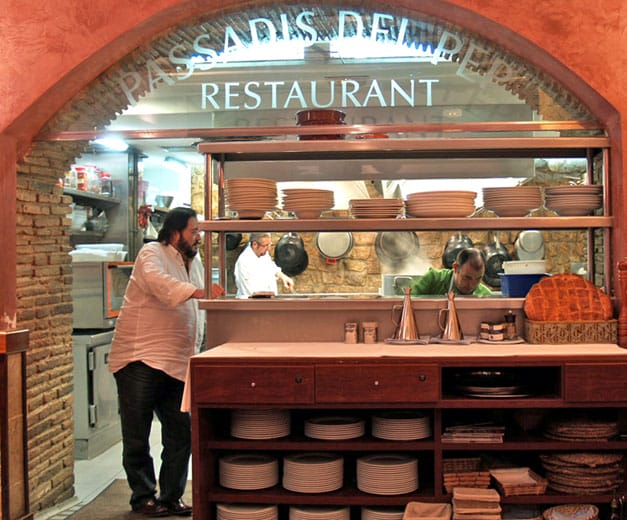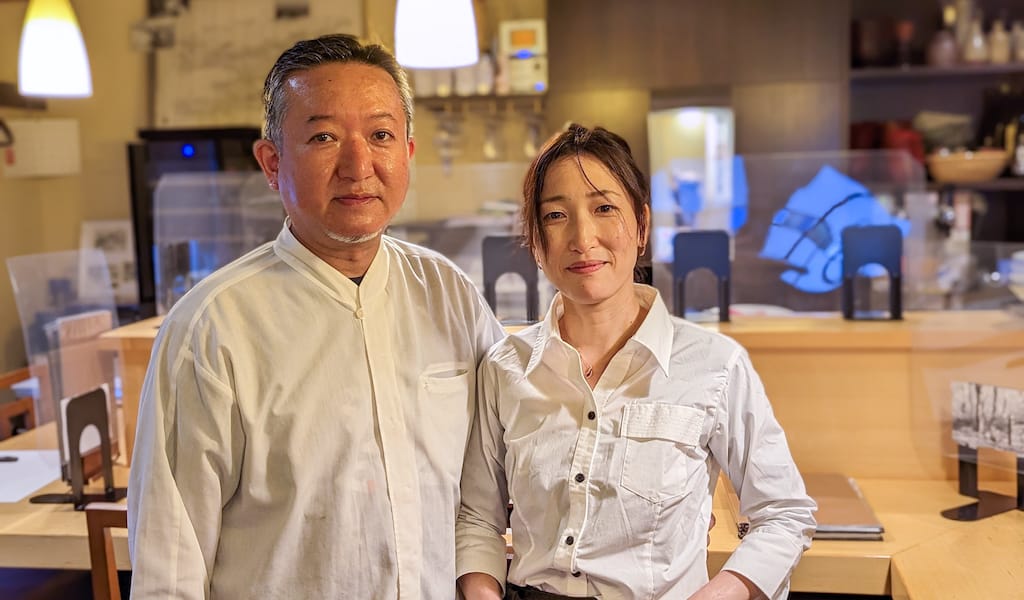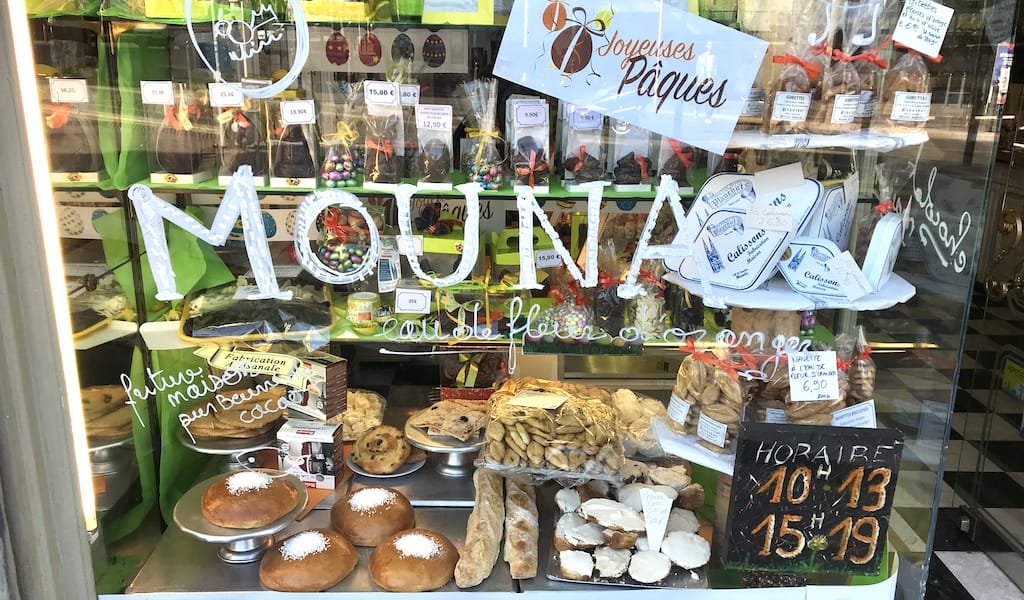Update: Guzina Oaxaca is sadly no longer open.
Mexico is gifted with both a tantalizing array of local delicacies and street stalls beyond count, serving them up for prices designed to feed the masses.
It’s paradise for adventurous foodies where the next great meal can be found by simply following one’s nose. Nevertheless, some spots rise to the top, usually building on tradition and a passion for the food itself.
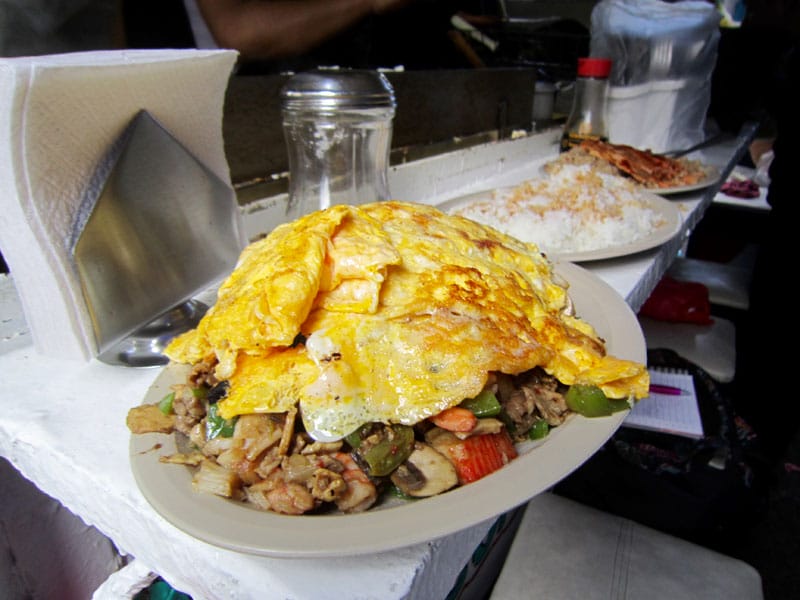
Arroces Baby Face
In Mexico City, every year brings new discoveries, and I was fortunate in 2016 to discover a gem, parked just out of the way from major tourist footpaths … but only just.
Inspired by his time living in Japan as a Mexican wrestler, Guadalupe Fuentes Ochoa, aka Baby Face, infused the rice (and its traditional Japanese preparation), egg and seafood combos he grew to love there, building in Mexican staples like chorizo, Oaxaca cheese, and nopales (cactus) and boosting flavor profiles with rich combinations of chilies like pasilla and habanero in the salsas.
In creating dozens of varieties from the many options, there was one dish that inspires hunger and, yes just a little fear, a towering juggernaut that’s too big for one platter.
The Apestoso Especial – the “Stinky Special” – weighs in at over a kilo and is built upon a bed of perfectly succulent rice that draws in the flavors of shrimp, surimi, beef, chicken, hot dog bits (don’t sneer), nopales and bell pepper, all covered in an avalanche of eight skillet-grilled eggs. It’s a heavyweight champion for sure.
— James Young
Pambazos
You can find pambazos in the streets of many Mexican cities. Although they differ from region to region, this Mexican sandwich has something in common all around the country. They’re made with white bread that is soaked in a red guajillo pepper sauce and then filled and toasted on the griddle before being served.
The bread for the sandwich, also called a pambazo, is different from other Mexican white breads. It doesn’t have much of a crust, and it’s made with eggs, lard and flour. It’s not usually eaten as a dinner roll because it’s tough and dry, which allows it to retain its shaped when soaked in sauce. You might find it at bakeries, but most of it is made for special deliveries for restaurants and street vendors.
In Mexico City the sandwiches are filled typically with papas con chorizo (potatoes with chorizo), lettuce, cream and cheese. However, you can find a greater variety of fillings nowadays, including beef and chicken.
Guzina Oaxaca
As someone with an enduring love for Oaxaca and its food, I’m always thrilled to find a new place in town that serves good traditional Oaxacan food. For some time, I had been hearing about Guzina Oaxaca, a restaurant in the upscale Polanco neighborhood, but had been reluctant to try it for fear of being let down. But when I finally did make it there earlier this year and were very pleased with what we found.
The menu features traditional Oaxacan bites such as grasshoppers, memelas, quesillo, tlayudas and a decadent stuffed squash blossom with cheese, but I was most interested in trying the iconic moles. The black mole with wild turkey was perfectly spiced, while the yellow mole with rabbit was a delicious surprise; but my favorite was the chichilo mole with lamb chops. It had that unique, pleasingly burnt taste that makes this one of my favorite moles in all of Mexico.
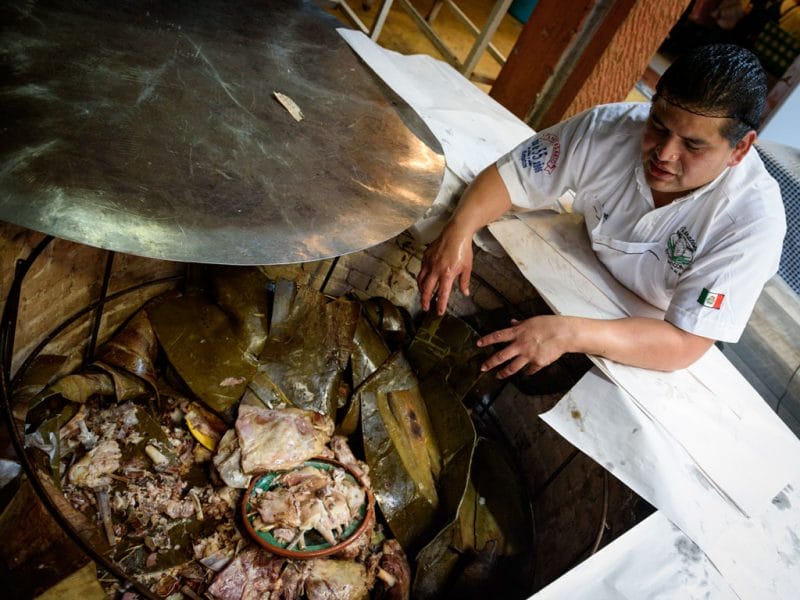
Barbacoa Renatos
My favorite find of the year was a restaurant that serves the best barbacoa in Mexico City. The Álvarez family has been making this specialty for more than 50 years. However, Bruno Álvarez, one of the youngest members of the dynasty, has taken it upon himself to make his father’s business thrive beyond the typical mom-and-pop establishment.
Using the traditional method of cooking the meat in an underground oven, high-quality mutton, and top-notch hygiene and preparation techniques, Bruno has been able to create a dining experience like no other in Mexico City.
I visited Barbacoa Renatos several times this year. On our last visit we were accompanied by celebrity chef Rick Bayless who enjoyed the experience as much as we did and learned from Renato himself how the barbacoa is prepared and served directly from the underground pit.
— Ben Herrera
Contramar
Contramar is the kind of place that makes one feel classier simply for patronizing it. The restaurant does its best to transport its customers to the sea via a subtle aesthetic that hints at water and beach. Bright white sheets top the outdoor wicker seats and tables. Ultramarine blue coats the restaurant’s facade while a striped blue and white awning hangs overhead. Eating at Contramar evokes sitting on the deck of a tasteful cruise ship.
But it’s not the decor that attracts the throngs of people to Contramar. Nor, as far as I can tell, is it the wide selection of plates on the restaurant’s menu. The majority of people go to Contramar for its famous tostadas de atún. The tostadas are deceptively simple: a deep-fried tortilla topped with cuts of raw tuna, a chipotle aioli, fried leeks and slices of avocado. The end result is a dish so good that one immediately considers buying a second serving moments after beginning the first. It’s a culinary experience that one does not want to finish. The crisp tortilla sticks to the bottom of the barely moist tuna, lending a satisfying crunch to the end of each bite. The quality of the ingredients is unmatched; the tostadas boast the freshest tuna one will find in D.F.
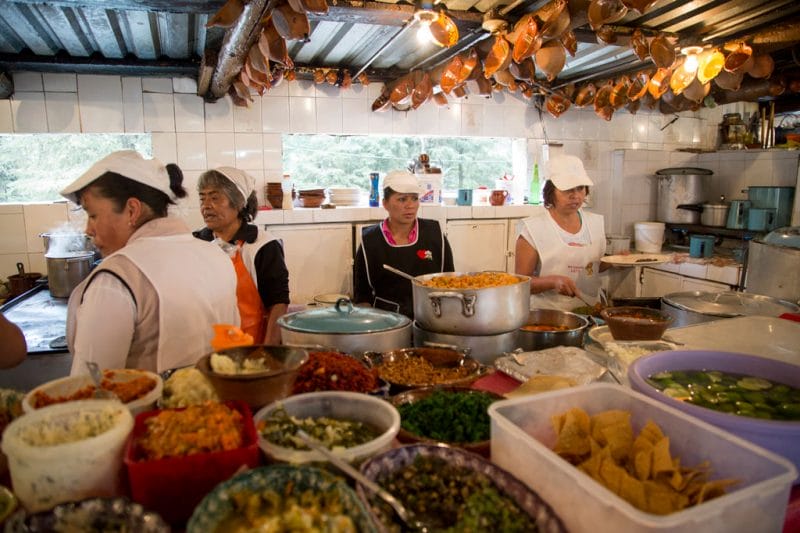
Lety’s Sopa de Medula and Tlacoyo
On par with Lety’s more famous sopa de hongos is its equally delicious sopa de medula, or bone marrow soup. The stock is a medium-thick beef broth filled with floating onions grilled to the point of transparency. The medula itself hangs like a flaccid squid tentacle off one’s spoon and melts in one’s mouth with the consistency of slightly overdone gnocchi. Bone marrow humbly absorbs flavor more readily than meaty tissue, so expect the boiled beef bone to taste heavily of onions. The dish, served steaming hot in a traditional ceramic bowl, warms one’s stomach, a welcome relief in the cold mountain air at 10,000 feet of elevation.
Once the medula has vanished, I order a tlacoyo. The dish is similar to a huarache in that it features a masa patty stuffed and topped with ingredients. But while garden-variety huaraches usually boast only a few ingredients, tlacoyos at Lety bulge and sag with goodies. Requesón, a ricotta-like, mild, soft cheese stuffs the interior blue corn pocket. Sauteéd nopales and onions mingle with queso fresco and cilantro atop the tlacoyo’s exterior. The patty is grilled, not fried, with a slightly charred exterior that gives way to a softer, doughy masa texture within.
— J. Alejandro
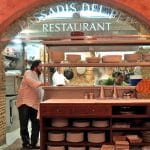 May 17, 2014 First Stop
May 17, 2014 First Stop
Editor’s note: In the latest installment of our recurring feature, First Stop, we asked […] Posted in Barcelona February 8, 2023 Nanohana: Cuisine from Sado Island
February 8, 2023 Nanohana: Cuisine from Sado Island
Nanohana could almost be mistaken for someone’s house if it weren’t for a small lectern, […] Posted in Tokyo April 9, 2020 Vive Le Pâques
April 9, 2020 Vive Le Pâques
Though half of France’s population is officially Catholic, only 5 percent of the country […] Posted in Marseille
Published on December 13, 2016
Related stories
May 17, 2014
BarcelonaEditor’s note: In the latest installment of our recurring feature, First Stop, we asked Michael Costa, head chef at the award-winning restaurant Zaytinya, in Washington, D.C., where he heads first for food when he arrives in Barcelona. El Passadís del Pep is home to the best, most authentic Catalan seafood in the city. There is…
February 8, 2023
TokyoNanohana could almost be mistaken for someone’s house if it weren’t for a small lectern, propping open an enthusiastically-scrawled menu. The restaurant is small and discreet, tucked down a side street, where its sandy-colored walls and wooden door with glass panels blends into a charming old neighborhood in Ueno in the east of Tokyo. We…
April 9, 2020
MarseilleThough half of France’s population is officially Catholic, only 5 percent of the country regularly attends mass. Yet, les français still remain faithful to their Christian holidays. After Christmas, Easter is the second-most popular fête – perhaps because it falls on a Sunday, when lunch en famille is a French tradition that is as revered…







































